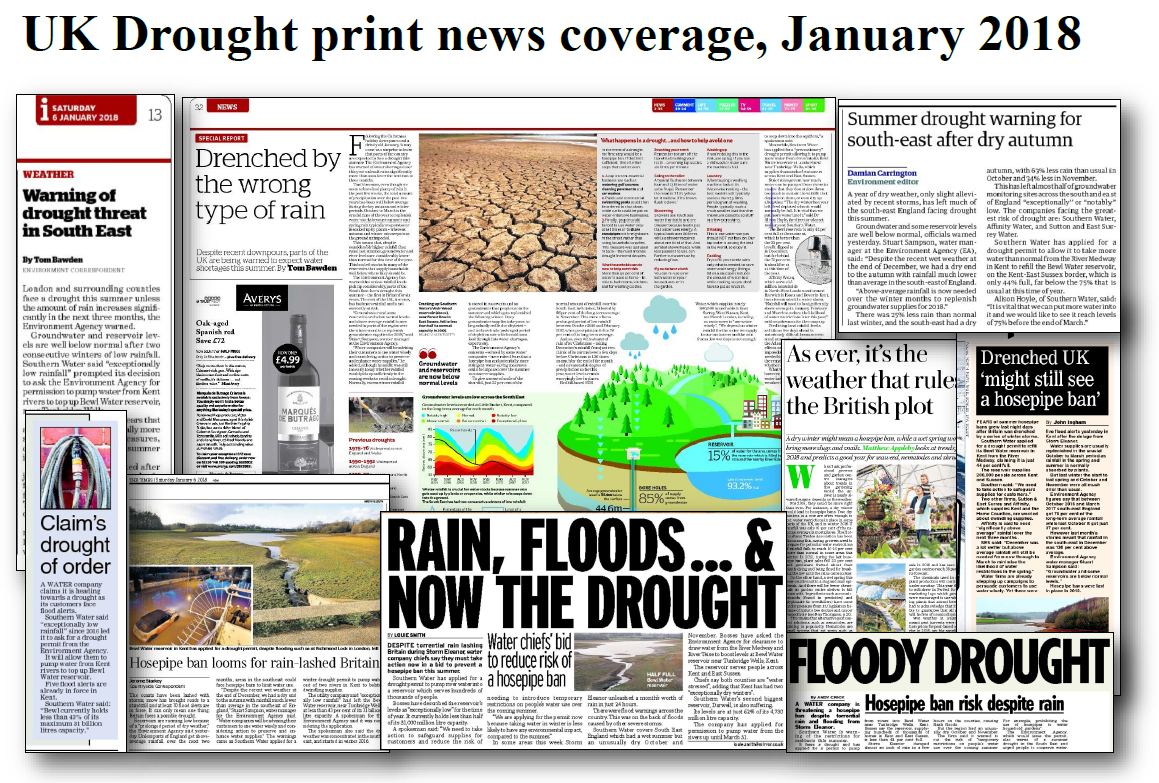Print media reacted to the Environment Agency’s briefing in early January on low groundwater levels and the prospect of a summer drought with headlines ranging from ‘Floody drought’ (The Sun) to ‘Drenched by the wrong kind of rain’ (The i). As Southern Water applied for an abstraction permit journalists were given a background briefing putting the application into context.

‘Floody Drought’, ‘Drenched by the wrong type of rain’: headlines that pick up the contradictory nature of Britain’s relationship with water and an underpinning perception that Britain is a land of plenty – at least when it comes to water. But hiding behind these headlines, published in January 2018, is the real challenge: for the British Isles rely on fairly regular rainfall and rather wet winters to ensure a plentiful water supply.
As the headlines suggest, the South East experienced a dry autumn and, if followed by a dry winter, the area would have been at risk of drought in summer 2018. This would not have meant standpipes in the streets and we were not approaching day zero (when the city runs out of water), as Cape Town had. But the result of the Environment Agency’s briefing should have provided pause for thought and an opportunity for communities to consider their drought resilience (and the measures they could take now to mitigate against the risk of hosepipe bans in the summer). But it didn’t.
Trying to engage the public and communities with the risks of water shortage is hard at the best of times. Britain is perceived to be a rather wet island surrounded by plenty of water. This challenge to communication, though, is particularly hard in the winter because there is a perceptual link between drought and hot weather. If it’s not hot, it can’t be a drought. This perception makes winter droughts amongst the most challenging to communicate. How do you explain to someone who perceives that it’s dull and overcast (and therefore wet) that we’re heading for a drought?
And so we return to the wrong type of headlines. ‘Floody drought’ may be an attempt to link text to the water cycle, but how does it help people to understand that indeed drought may be followed by floods? Better a headline linking flood to the wrong type of rain. Headline writers love a contradiction: ‘Drenched UK might still see a hosepipe ban’ fits the bill but doesn’t help to address the problem of water resources and growing demand.
Newspapers may seek to grab our attention through these contradictory headlines, but unless readers go beyond the headline and start to understand Britain’s complex relationship with water, they will only reinforce stereotypes. In the face of climate change, it’s time to change those stereotypes.
